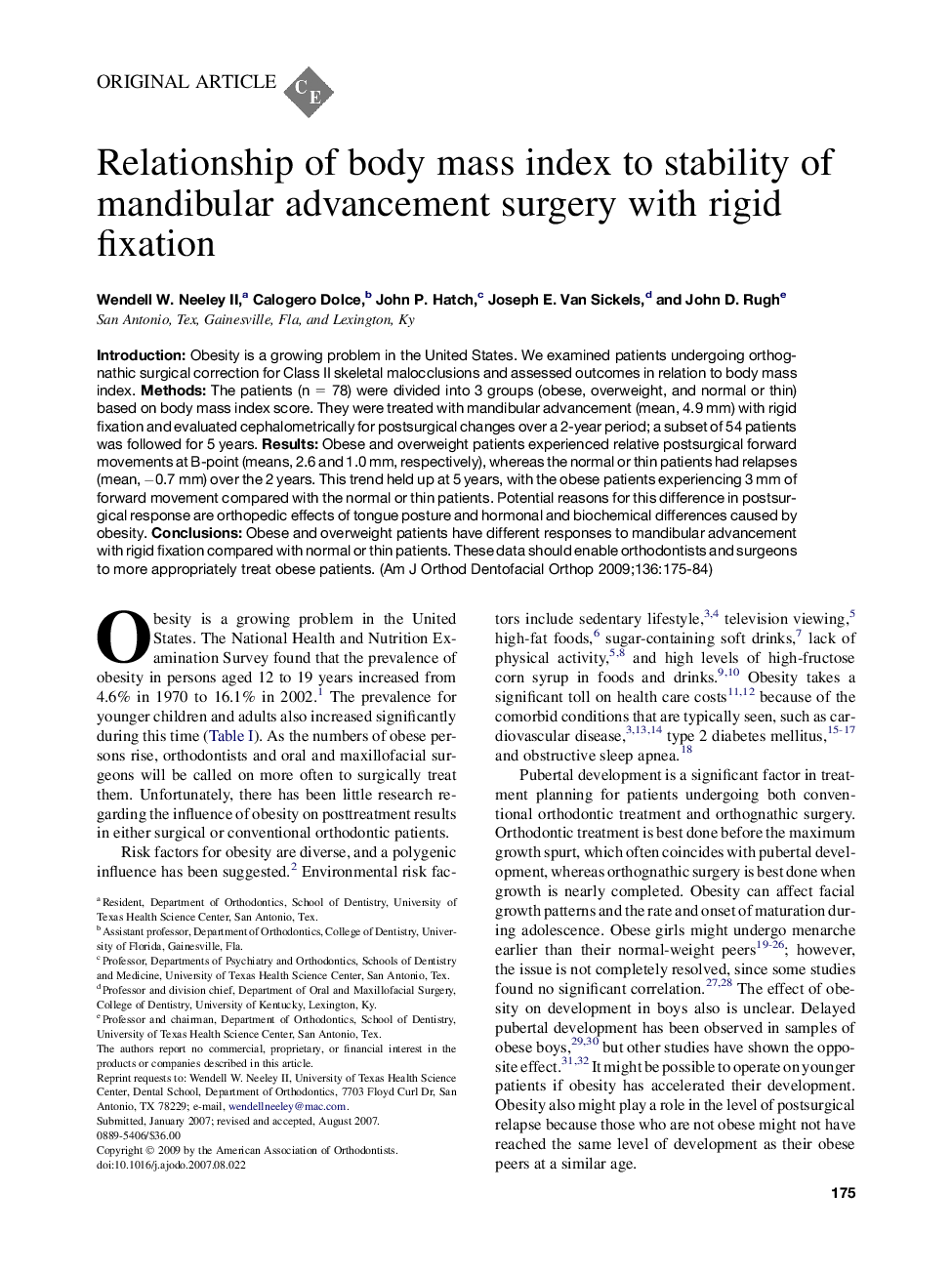| Article ID | Journal | Published Year | Pages | File Type |
|---|---|---|---|---|
| 3118842 | American Journal of Orthodontics and Dentofacial Orthopedics | 2009 | 10 Pages |
IntroductionObesity is a growing problem in the United States. We examined patients undergoing orthognathic surgical correction for Class II skeletal malocclusions and assessed outcomes in relation to body mass index.MethodsThe patients (n = 78) were divided into 3 groups (obese, overweight, and normal or thin) based on body mass index score. They were treated with mandibular advancement (mean, 4.9 mm) with rigid fixation and evaluated cephalometrically for postsurgical changes over a 2-year period; a subset of 54 patients was followed for 5 years.ResultsObese and overweight patients experienced relative postsurgical forward movements at B-point (means, 2.6 and 1.0 mm, respectively), whereas the normal or thin patients had relapses (mean, −0.7 mm) over the 2 years. This trend held up at 5 years, with the obese patients experiencing 3 mm of forward movement compared with the normal or thin patients. Potential reasons for this difference in postsurgical response are orthopedic effects of tongue posture and hormonal and biochemical differences caused by obesity.ConclusionsObese and overweight patients have different responses to mandibular advancement with rigid fixation compared with normal or thin patients. These data should enable orthodontists and surgeons to more appropriately treat obese patients.
